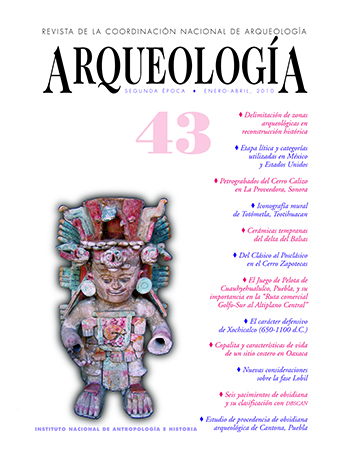Published 2010-04-01
How to Cite
Abstract
It has been proposed that many cities that arose after the fall of Teotihuacan (ca. AD 650) had a defensive function. Since the first recorded visit to Xochicalco (in 1777), it has been regarded as a military, defensive center due to the appearances of walls, pits and bastions. Recent excavations at Xochicalco —along with earlier explorations at one of the main entrances to the city— show that between AD 650 and 1100 these architectural features had a primarily defensive function, even though they enclosed areas that involved different kind of activities, including ritual ones. The city was ready for almost any attack, from the front or the sides, by climbing, siege or invasion; everything but the internal revolt that lead to its final abandonment.

